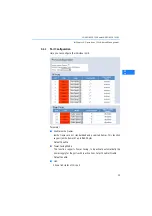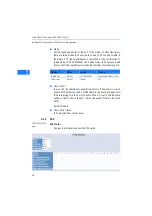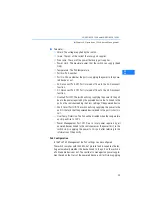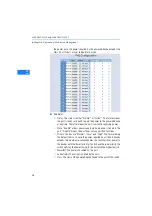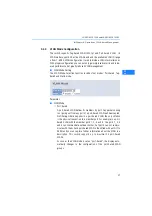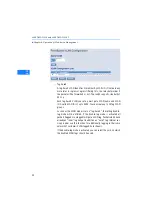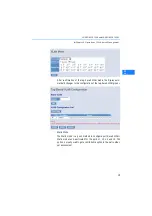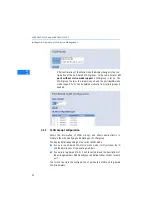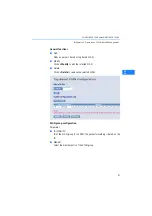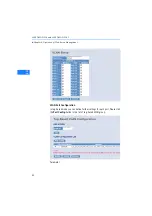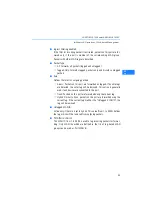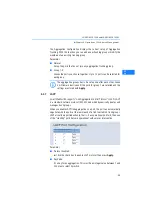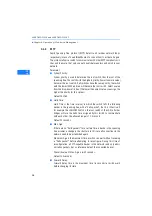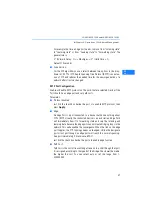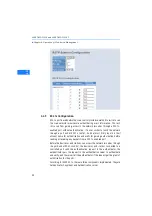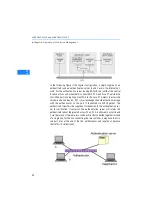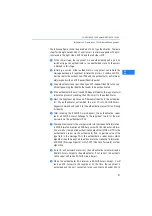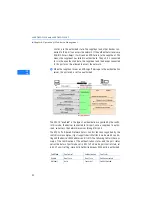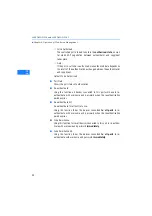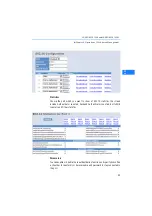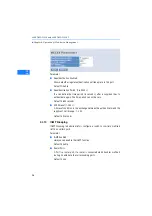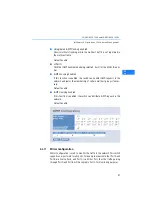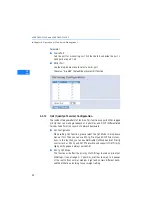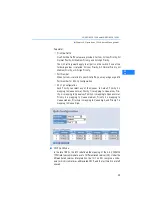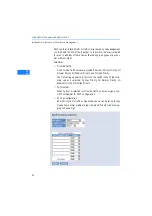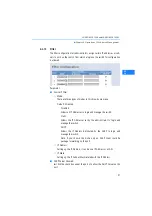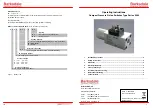
LANCOM GS
-
1224 and LANCOM GS
-
1224P
쮿
Chapter 4: Operation of Web- based Management
37
EN
For example the time a brige port needs, to move from “Listening state”
to “Learning state” or from “Learning state” to “Forwarding state”. The
general rule is:
2 * (Forward Delay - 1) >= Max Age >= 2 * (Hello Time + 1).
Default: 15 seconds
쮿
Force Version:
For the STP algorithm you can select between two options in the drop-
down list: RSTP or STP. Rapid Spanning Tree Protocol (RSTP) is an exten-
sion of STP and reduces the needed time for the new organisation of a
network after structure changed.
RSTP Port Configuration
Enable or disable RSTP protocol on the ports that are selected. Decide if the
Port should be an edge port and set path costs.
Parameter:
쮿
Protocol Enabled:
Just tick the check box beside the port x to enable RSTP protocol, then
press
Apply.
쮿
Edge:
An Edge Port is a port connected to a device that knows nothing about
STP or RSTP. Usually, the connected device is an end station. Edge Ports
will immediately transit to forwarding state and skip the listening and
learning state because the edge ports cannot create bridging loops in the
network. This will expedite the convergence. When the link on the edge
port toggles, the STP topology keeps unchanged. Unlike the designate
port or root port though, an edge port will transit to a normal spanning-
tree port immediately if it receives a BPDU.
Just tick the check box beside the port x to enable edge function.
쮿
Path Cost:
Path cost is the cost of transmitting a frame on to a LAN through that port.
It is assigned according to the speed of the bridge. The slower the media,
the higher the cost. You can select auto or set the range from 1-
200000000.

